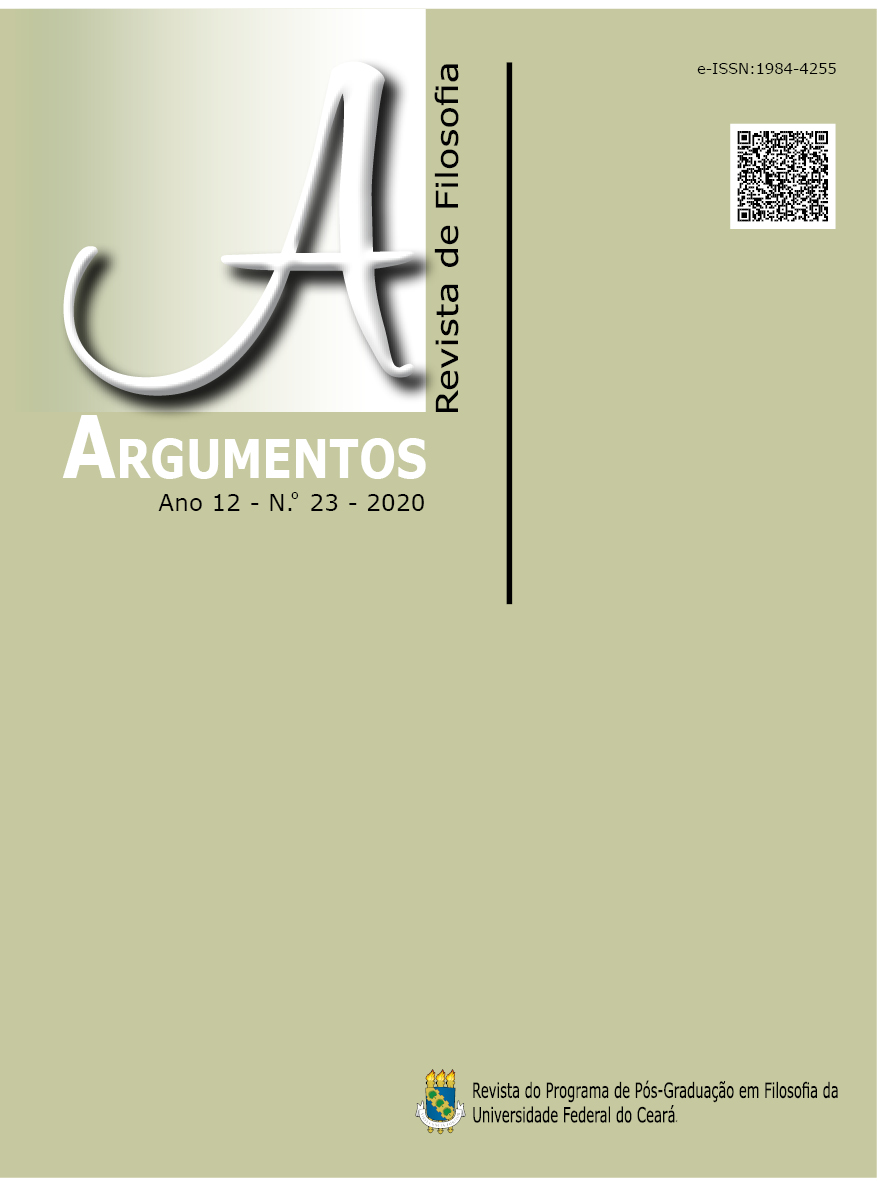Semantic ambiguity does not imply syntactic ambiguity
DOI:
https://doi.org/10.36517/Argumentos.23.1Palabras clave:
Ambiguity. Logical form. Model. Semantics. Syntax.Resumen
A problem to solve in generative grammar is to account for why children are able to note when a sentence or expression is ambiguous, even if they have not received explicit training for that. The theory of mental models can give an explanation in that way. That explanation is based upon the idea that people interpret linguistic messages by considering the semantics models corresponding to them, and it has been also proposed that the syntactic structures of those messages can be recovered by taken those very models into account. However, the point of this paper is that it tries to show that ambiguity at semantic level, that is, the cases in which models referring to different facts can be attributed to one sentence, does not necessarily lead to ambiguity at syntactic level. As it is argued, it is possible to capture models describing several opposite circumstances by means of only one logical form.
Citas
HINTERECKER, T., KNAUFF, M., & JOHNSON-LAIRD, P. N. Modality, probability, and mental models. Journal of Experimental Psychology: Learning, Memory, and Cognition, v. 42, n. 10, 2016. p. 1606-1620.
HORNSTEIN, N. Logic as Grammar: An Approach to Meaning in Natural Language. Cambridge, MA: The Massachusetts Institute of Technology (MIT) Press, 1987.
HORNSTEIN, N. Logical Form: From GB to Minimalism. Cambridge, MA, & Oxford, UK: Blackwel, 1995.
JOHNSON-LAIRD, P. N. (2010). Against logical form. Psychologica Belgica, v. 50, n. 3/4, 2010. p. 193-221.
JOHNSON-LAIRD, P. N. Inference with mental models. In: Holyoak, K. J. & R. G. Morrison, R. G. (Eds.). The Oxford Handbook of Thinking and Reasoning. New York, NY: Oxford University Press, 2012.
JOHNSON-LAIRD, P. N. How to improve thinking. In: Wegerif, R., Li, L., & Kaufman, J. C. (Eds.). The Routledge International Handbook of Research on Teaching Thinking. Abingdon, UK, & New York, NY: Routledge, 2015.
JOHNSON-LAIRD, P. N., KHEMLANI, S., & GOODWIN, G. P. Logic, probability, and human reasoning. Trends in Cognitive Sciences, v. 19, n. 4, 2015. p. 201-214.
KHEMLANI, S., BYRNE, R. M. J., & JOHNSON-LAIRD, P. N. Facts and possibilities: A model-based theory of sentential reasoning. Cognitive Science, v. 42, n. 6, 2018. p. 1887-1924.
KHEMLANI, S. & JOHNSON-LAIRD, P. N. Why machines don’t (yet) reason like people. Künstliche Intelligenz, 2019. Retrieved from: https://link.springer.com/article/10.1007%2Fs13218-019-00599-w#aboutcontent
LÓPEZ-ASTORGA, M. Language acquisition and innate cognitive abilities: An approach from the mental models theory. Círculo de Lingüística Aplicada a la Comunicación (CLAC), n. 77, 2019a. p. 233-242.
LÓPEZ-ASTORGA, M. Possible roles for semantics and syntax in a government-binding structure. Prometeica, n. 19, 2019b. p. 72-79.
ORENES, I. & JOHNSON-LAIRD, P. N. Logic, models, and paradoxical inferences. Mind & Language, v. 27, n. 4, 2012. p. 357-377.
QUELHAS, A. C., RASGA, C., & JOHNSON-LAIRD, P. N. A priori true and false conditionals. Cognitive Science, v. 41, n. 55, 2017. p. 1003-1030.
QUELHAS, A. C., RASGA, C., & JOHNSON-LAIRD, P. N. The analytic truth and falsity of disjunctions. Cognitive Science, v. 43, n. 9, 2019. Retrieved from: https://modeltheory.org/papers/2019analytic-truth-disjns.pdf
Descargas
Publicado
Número
Sección
Licencia
Los autores que publican en esta revista aceptan los siguientes términos:
- Los autores mantienen los DERECHOS AUTORALES otorgados a la revista O el Derecho de Primera Publicación, con el trabajo licenciado simultáneamente a Creative Commons License Attribution (CC BY) que permite compartir el trabajo con reconocimiento de autoría y publicación inicial en esta revista.
- Los autores pueden aceptar contratos, distribución no exclusiva de la versión del trabajo publicado en esta revista (por ejemplo: publicación en el repositorio institucional o como capítulo del libro), con reconocimiento de autoría y publicación inicial en esta revista.
- Se permite a los autores publicar y distribuir su trabajo on-line (por ejemplo, en repositorios institucionales o en su página personal) durante el proceso editorial de información de que el artículo está en proceso de publicación. Esto puede aumentar el impacto y cita de trabajos publicados.

SOBRE COPYRIGHT Y POLÍTICA DE ACCESO LIBRE
La revista utiliza la atribución CC BY



.jpg)










._._3.png)
1.jpg)
._._._.png)
